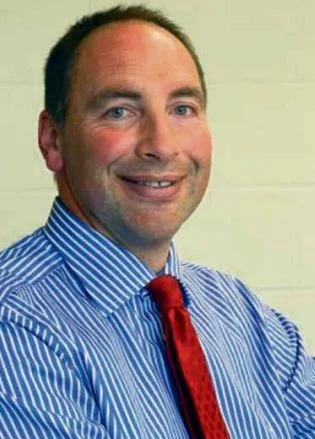 CONTINUING our interview with Council leader Jamie Adams about the County Council’s 21st Century Schools programme, we spoke about the Council’s plan for funding the scheme and future of secondary education in Pembrokeshire.
CONTINUING our interview with Council leader Jamie Adams about the County Council’s 21st Century Schools programme, we spoke about the Council’s plan for funding the scheme and future of secondary education in Pembrokeshire.
The question of funding
“We are lucky in Pembrokeshire,” begins Jamie Adams. He pauses. “No, not lucky: we have been very well-managed. As I said before, we are looking at using our assets more efficiently and disposing of part of our estate to release capital and reduce expenditure. The requirement for funding the schools programme has significantly increased in cost after the Welsh Government reduced its own input into it
“Our plan as a Council is to get one third or so of our funding from the Welsh Government, to raise one third of the funding through efficiency savings and asset sales, and to raise the rest by prudential borrowing. We are not looking, at this time, at models like the Private Finance Initiative or Public Private Partnerships.
“We are able to access prudential borrowing, because of the way we have managed the Council’s finances and thought strategically about the future. In the long-term prudential borrowing is likely to cost us a good deal less than other finance options
“While I am confident about funding the schools programme that does not mean there are not challenges we need to face: particularly about secondary education.
Populating the classrooms
“When we look at our schools provision for the 11 plus group, we have to look at the population of Pembrokeshire, more particularly its distribution.”
He gestures to the large map of Pembrokeshire on the wall to underline his point:
“We have eight secondary schools in Pembrokeshire and 1,000 spare spaces. In the future we are projected to have greater additional capacity. We have an unsustainable secondary education provision and it is clear something has to give.
“As to how our future provision will look: that is a matter for consultation. But we will have to make tough decisions and they should not be put off. The Welsh Government has given a very clear lead on reducing the amount of the education budget spent on spare capacity within the system. In a time when public finances are stretched we cannot afford to maintain underused buildings, under-occupied classrooms and excess school places.
“With those surplus places, we are spending a disproportionate amount of scarce resources in circumstances where there can be no positive return for that money in terms of outcomes for students. As an authority, our focus is very firmly on getting the best outcomes we can for investing in the education system.
“I understand the concerns of local communities. Other Cabinet members and I went out to listen to them and to get the views of Pembrokeshire’s people on how we could improve our services and deliver them more efficiently. As part of that exercise, I went to Saint Davids. There has been a lot of speculation about the future of Ysgol Dewi Sant and very strong local feeling has been expressed in the press and at public meetings. People who spoke to me there: well, it was not all about “don’t close the school”. Parents and other members of the community in Saint Davids were concerned about putting viable options forward for the future.
“It would be nice to have a federal structure with different parts of the curriculum delivered on different sites,” he gestures at the map again, “travel times between the scattered sites make that unsustainable and impractical.
A new plan for Pembrokeshire
“Of course, as a Council we have to make decisions in relation to the County-wide provision of secondary education. We have to consider what opportunities exist to improve our secondary provision and offer a broad and enriching education to kids.
“We have to be straight here: some pupils do not achieve academically in the current system. We want to provide opportunities for varied training and education post-14 in conjunction with Pembrokeshire College. Again, this is focussing on outcomes for all Pembrokeshire children.
“Traditionally, in my view, education in Pembrokeshire has been a ‘comfortable’ place to be. We’ve achieved ‘comfortable’ outcomes. My personal opinion is that for too long there has been a focus on obtaining a degree as the be all and end all of education. I profoundly disagree with that position, there has to be a good pathway for those who wish to follow vocational or career-based education and for those who are less-academically inclined.
“We have been in discussions with Pembrokeshire College about what we can do to improve the situation for 14-19 year olds. Those discussions have been frank on both sides: we have acknowledged and the College has acknowledged that there are things we do well and things we do not as well.
“That honesty and those discussions mean that we are in the process of forging a partnership that will substantially change the provision of education in Pembrokeshire for pupils after the age of 14. That partnership is based on us complementing what each other do.
“Every pupil deserves the chance to make the best of their abilities. I want to make sure that we improve the outcomes not only for those academically gifted students who progress on to higher education and go on to well paid, professional careers. We will continue to encourage those students and be pleased for their success. Outcomes exist, however, that cannot be measured simply in terms of only academic success. There is absolutely nothing wrong with a successful vocational education.
“What I want education in Pembrokeshire to achieve is to enrich learning, to motivate teachers and to achieve outcomes that bring out the very best in all of our children, be that in terms of academic success or otherwise. We want our children to be motivated to succeed wherever their strengths lie and to give them chances to do so, whether those strengths are academic, entrepreneurial, arts, or skilled trades.
“We are thinking for the medium to long-term: not quick fixes or fiddling around the edges. Some other local authorities have gone for easy solutions. I believe, in the future they will regret not taking the opportunities that the 21st Century Schools programme has offered them.”
It is time to go. We exchange pleasantries, shake hands and head our separate ways. As I head down the stairs, I thank the Council’s press officer who arranged the meeting.
Here at The Pembrokeshire Herald, we are sometimes critical of the Council and its IPPG leadership. We have occasionally suggested that they have got things wrong. But Jamie Adams has been brisk, professional and thoughtful – especially about some of the left-field questions thrown at him.
As I head out into a December evening, I reflect that Jamie Adams’ attitude to the future of Pembrokeshire’s education system is in marked contrast to the squally weather. He seems very certain, very confident.
Driving off into the rain, I can’t help thinking about the storm of public opinion as schools programme unfolds. It will be interesting, to interview him again when consultations have concluded, decisions have been made and the public have given their reaction to see how events have influenced the Council’s vision.


















Add Comment